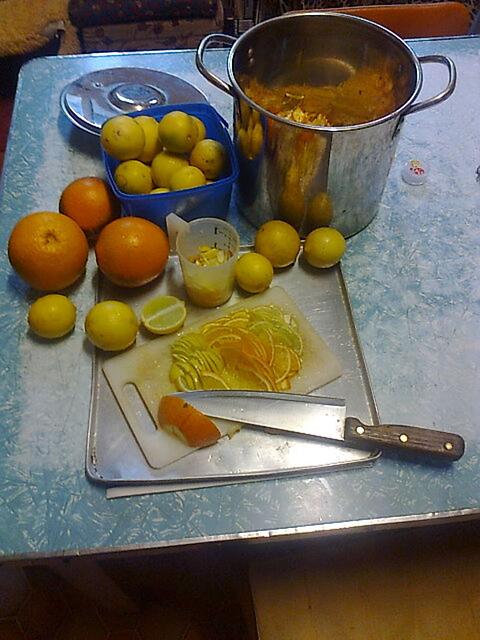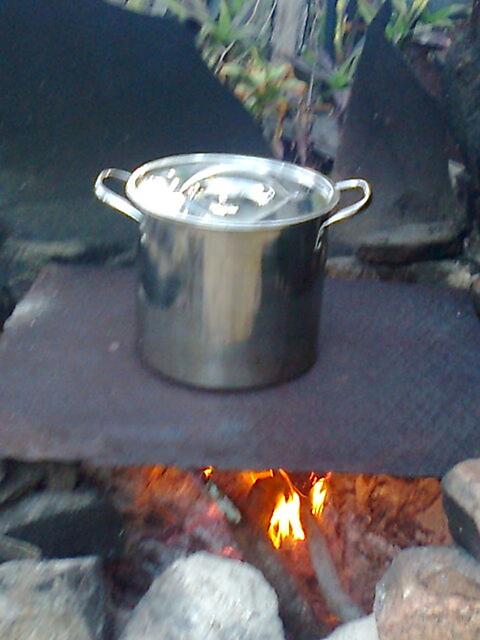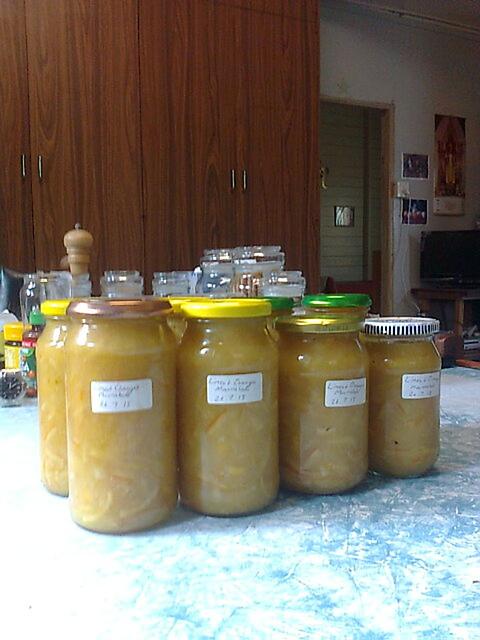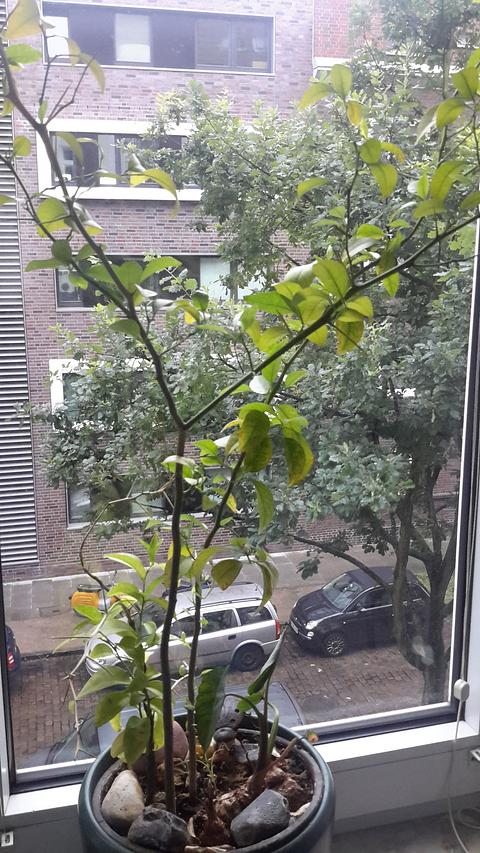A recipe of 8s --> Limorade
recipe of 8s --> Limorade
We usually have a lot of citrus fruits (lemons, oranges and limes) in winter. Our Valencia (วาเล้นเซีย - as in valence - not วาเลนเซีย) oranges are quite large and sweet. Our Tahitian (ทาหิเชี่ยน) or Persian limes are larger and yellower than the Indian or Thai limes but they are similarly sour.
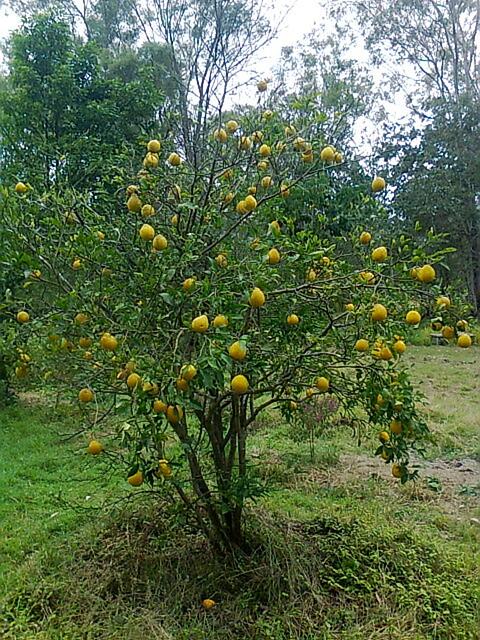
So what do we do with them. We eat oranges in the evening with other fruits like avacados, paw paws, guavas, passionfruits, and any fruits that happen to ripen on the day. (We usually have something at breakfast and a main meal at lunch but fruits or nothing at evening.) We use lemons and limes in chilli-fish sauce, hot-sour vegetable soup, salad, and drinks. But there are still too many limes. We give some away. We can pickle them in brine (salt water) but we still have pickled limes from last year in our pantry.
Well this Winter we make something else. Here is the recipe of 8s to make 'limorade' (You may like a name like 'lime-orange marmalade' better ;-)
Ingredients
5-6 or 8 cups of oranges (cut in quarters top-to-bottom and slice as thin as we can)
16-20 or 8 cups of limes (cut and slice like oranges)
50g or 8 level teaspoons of salt (optional, more or less or none to taste)
1.6kg or 8 cups of sugar (more or less to taste)
*3 hours or more of stirring over a hot fire (or a gas/electric stove)
Methods
Put oranges and limes in a large pot, heat it to boil in its own liquid/juice, lower heat to simmer until the pulp/rind softens, add salt and sugar, keep stirring to reduce the mixture until it thickens and resists stirring.
Fill (glass) jars right to (level) the top and cap them tight while hot.
Jars and lids should be cleaned and sterilized before filling. We usually clean jars and lids, boil them for 5 minutes and dry jars upside down and leave the lids in hot water. Just before we fill the jars we microwave the jars for 90 seconds.
WARNING: hot marmalade, hot jars, and hot lids must be handled carefully. Use a scoop or a cup with handle (better than a ladle) to fill the jars. Fill them carefully. Slowly but safely is a lot better than a scald.
This recipe should make 8 (375cc) jars (of limorade). We can scale up or down to recipe of 10s or recipe of 5s. Cooking time will vary with the amount of ingredients and the heat we use.
Nutritional information
Each orange gives some 60 Kcal; each lime 40 Kcal (a Thai lime gives less Kcal); each cup of sugar about 800 Kcal; so all together we have about 8,000 Kcal or 1,000 Kcal per jar. About 6,250 mg of salt per jar. The rest may help to lower blood pressure (please check it out).
Use
Limorade can be spread on sliced bread or toast (each slice gives about 70 Kcal); as sauce on barbecued chicken or meat or fish; (add some chillies and spices then) use as a dip for vegetables; and so on.
We can work out how much limorade we should use in a meal to meet our energy requirement. Our limorade gives some vitamin C as added benefit but a whole jar is not enough for daily vitamin C requirement (2,000mg). Note, half a jar will supply enough salt for 1 whole day! (3,125mg of salt in half jar; daily salt requirement is less than 4,700mg).
Enjoy!
ความเห็น (4)
Thanks ยายธี: Our limorade eats well as looks well (DIY is often better ;-)
Citrus plants don't have deep roots but more shallow (1m or less) spreading roots. So they can do better in wider pots (even a large rectangular plastic container - made in CN) to give more room for roots. A little wood ash or dry chook poo (source of potassium K) may wake its motherhood up ;-) Some people may suggest pruning to make it look bushier, but I think it looks great as it is.
โอโหดกมากเลยครับ
น่าสนใจมาก
มาปลูกที่บ้านเราได้ไหมครับ
Hi : Citrus varieties are quite adaptable. They can live in deserts and in temperate zones (to about latitude 40 degrees over and under the Equator). Thailand is ideal for growing citruses but Thais have taste preference so many citruses are not popular. Both Tahitian (Persian) lime and Valencia orange are growing well in Thailand under different names ;-)
